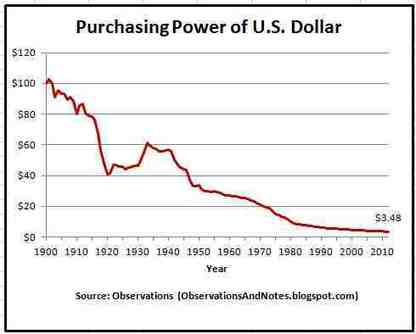One of the most common arguments against pricing goods and services in sats is that BTC is volatile, and thus a 25,000 satoshi dollar bill could be worth 30,000 sats or 20,000 sats tomorrow. While it’s certainly true that cryptocurrencies can be highly volatile, fiat currencies are not exempt from this malaise. In fact, when viewed over a long enough timeframe, the U.S. dollar’s properties as a store of value don’t look so hot:
Should bitcoin ever become the global reserve currency, everything will be priced in satoshis. In the meantime, there’s nothing to stop ecosystem participants – vendors, wallet developers, P2P market operators, and consumers – from adopting the satoshi as their default unit of account for low value transactions. In the early aughts, when European Union countries began switching to the euro, it was common for shops to display prices in their outgoing national currency as well as in EUR. Perhaps it’s time for the bitcoin community to follow suit.
The first phase is to champion a dual system in which items are priced in both fiat currency and in sats. Should hyperbitcoinization ever occur, phase two will require no explanation – by that point, we’ll know what to do. But that’s a conversation for another day. For now, all that matters is that we start spending, sending, and receiving satoshis. Just as a journey of 1,000 miles starts with one small step, the transition to satoshis starts here.
Sourced through Scoop.it from: news.bitcoin.com



Leave A Comment